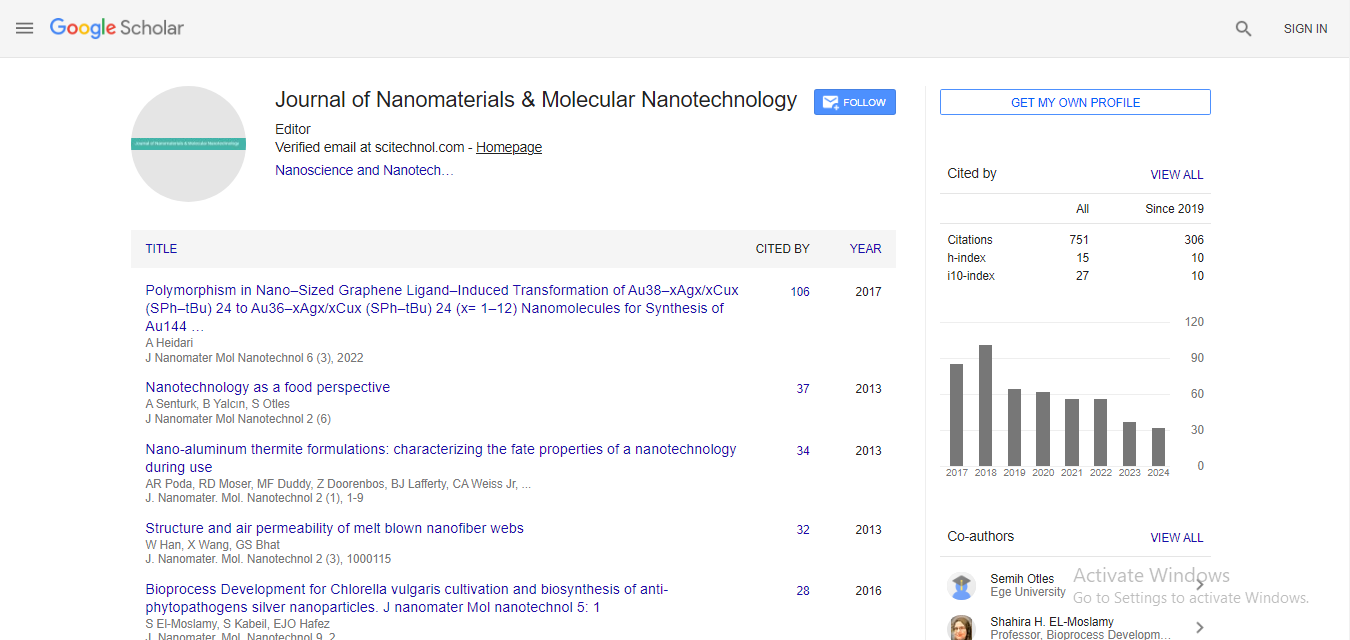Natural nanomaterial engineering for water treatment: A new process to improve solar disinfection
Faissal Aziz, Lina Abu Ghunmi, Naaila Ouazzani , Abdusalam Uheida and Laila Mandi
University Cadi Ayyad, Morocco
Semlalia Faculty of Sciences, Morocco
The University of Jordan, Jordan
KTH- Royal Institute of Technology, Sweden
: J Nanomater Mol Nanotechnol
Abstract
Low-cost treatment methods to allow safe use of water can have important beneficial implications in the rural area. Recently, pathogenic bacteria and macromolecular organic pollutants have become a focus problem in the water remediation. As an effective advanced treatment technology, Heterogeneous phototcatalysis is a promising and innovative green purification technology. Photocatlaysis technology based on iron oxide has provided an effective and promising means for remediation of environmental pollutants in air and water. Iron oxides and iron oxyhydroxides have been studied extensively as photocatalysts, because of their visible-light responsiveness, low cost, nontoxic nature, and natural abundance. Of the various such compounds investigated, natural goethite (α-FeOOH) is known to be a visible-light-responsive photocatalyst. In this study, the photocatalytic degradation of dye (Mythelen Bleu) and bacteria innactivation using polyacrylonitrile (PAN) nanofibers containing natural geothite particles were investigated. The fabricated composites nanofibers of PAN/Geothite were characterized with Scanning Electron Microscopy (SEM) and Energy Dispersive X-ray (EDX). Chemical composition of the natural goethite nanoparticles were determined by X-ray Fluorescence spectrometry (XRF). Partially intercalated structures of PAN/Geothite composites nanofibers (CNF) were confirmed by SEM and EDX analysis. So, the aim of this study is the fabrication and surface engineering of electrospun PAN / goethite CNF, and the photocatalytic activities examination of this nanocomposite on the decomposition of dye and bacterial removal under visible-light irradiation. The results show that the nanocomposites have highly enhanced photodegradation by their exfoliation using electrospinning technique, which decompose a high degradation efficiency (>90%) of dye in less than 5 hours. Then, 4,4 and 3,5 log units reduction of E. Coli and Clostridia respectively in less than 5 hours also.
Biography
E-mail: faissalaziz@gmail.com, faziz@kth.se
 Spanish
Spanish  Chinese
Chinese  Russian
Russian  German
German  French
French  Japanese
Japanese  Portuguese
Portuguese  Hindi
Hindi 



